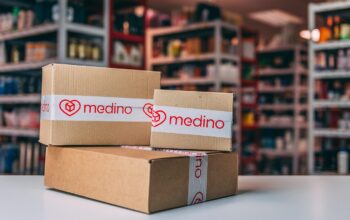The supply chain landscape in 2025 is undergoing an exciting evolution, driven by breakthroughs in technology, strategy, and a sharper focus on resilience. Think of the supply chain as a living organism — it needs to adapt, grow, and become smarter to survive in today’s fast-paced business jungle.
Here are five trending supply chain frameworks making waves this year, not just theories but battle-tested in real-world settings.
1. Autonomous Operations: Beyond Automation Imagine a factory or warehouse where machines don’t just follow instructions but self-monitor, self-regulate, and optimize themselves continuously. Gartner’s 2025 research highlights that CEOs expect many supply chain processes to become fully autonomous within three years. This means no human hands on repetitive tasks but more time spent on strategy and innovation. For example, some top companies are deploying robots that instantly reroute workflows when delays happen — kind of like a GPS recalculating your route while you drive. It’s productivity on steroids, improving safety and accuracy.
2. Agentic AI Driving Smart Networks Procurement and logistics leaders are turning to agentic AI, which embeds intelligence throughout the supply chain network itself. This AI doesn’t just analyze data; it drives actions and makes decisions on its own while learning from outcomes. Picture it like having a digital brain at every node—from raw materials sourcing to delivery—that senses problems early and adjusts plans seamlessly. This real-time adaptability cuts waste and speeds up delivery, creating supply chains that feel almost alive.
3. Supply Chain Diversification & Regionalization in APAC As geopolitical tensions and trade complexities rise, companies in Asia-Pacific are embracing diversification strategies like “China Plus One.” Instead of relying solely on China, firms set up parallel supply chains in countries such as Vietnam, Thailand, and Malaysia. For example, manufacturers are expanding into Johor, Malaysia, where special economic zones offer streamlined trade and quick access to major ports. This approach isn’t just about risk mitigation; it’s about being closer to customers and more responsive to local market needs.
4. Machine Learning-Enhanced Supply Chain Visibility One of the classic supply chain headaches is disconnected data streams that make real-time insights hard to get. Machine learning now acts like a master connector, integrating diverse data sources like IoT devices, warehouse metrics, and shipment statuses into unified dashboards. These dashboards not only show what’s happening but predict delays and recommend fixes before things break down. For instance, a logistics manager might get early warnings about inventory shortages and automatically trigger replenishment, avoiding costly stockouts.
5. Breaking Procurement Silos for Strategic Value Legacy procurement processes often trap companies in silos, working in isolation from other parts of the business. Innovative frameworks now encourage procurement teams to partner closely with suppliers, finance, and operations to cultivate strategic thinking. Procter & Gamble, for example, leverages this cross-functional approach to use its supply chain as a growth engine, boosting revenue and market share. It’s about shifting procurement from a back-office cost center to a driver of competitive advantage.
Putting It All Together These frameworks share a common thread: supply chains are becoming more intelligent, adaptable, and aligned with business goals. They aren’t simply about moving products efficiently but about enabling companies to respond faster, reduce risks, and create value.
Think of today’s supply chain frameworks as the playbook for thriving in uncertainty — blending advanced tech like AI and machine learning with smart strategic pivots like regional diversification and cross-team collaboration.
For companies and professionals, the lesson is clear. To keep pace — embrace autonomy, harness AI, diversify supply routes, boost visibility, and break down silos. These aren’t just buzzwords but real game-changers powering the supply chains of tomorrow.
References:
- https://www.gartner.com/en/supply-chain/research/supply-chain-top-25
- https://www.scmr.com/archive/may-june-2025
- https://supplychaindigital.com/articles/gartners-top-25-global-supply-chain-2025
- https://www.oliverhcp.com/news-and-resources/packtalk/disruption-to-adaption-how-apac-navigating-through-supply-chain-in-2025
- https://networkon.io/resources/blog/how-machine-learning-is-revolutionizing-supply-chain-forecasting-in-2025/
- https://www.federalregister.gov/public-inspection/2025-10991/repeal-of-greenhouse-gas-emissions-standards-for-fossil-fuel-fired-electric-generating-units
- https://www.ismworld.org/supply-management-news-and-reports/news-publications/inside-supply-management-magazine/blog/2025/2025-06/supply-chain-news-roundup-bracing-for-impacts-of-latest-conflict/
- https://www.cms.gov/files/document/cms-9884-f-2025-pi-rule-master-5cr-062025.pdf



